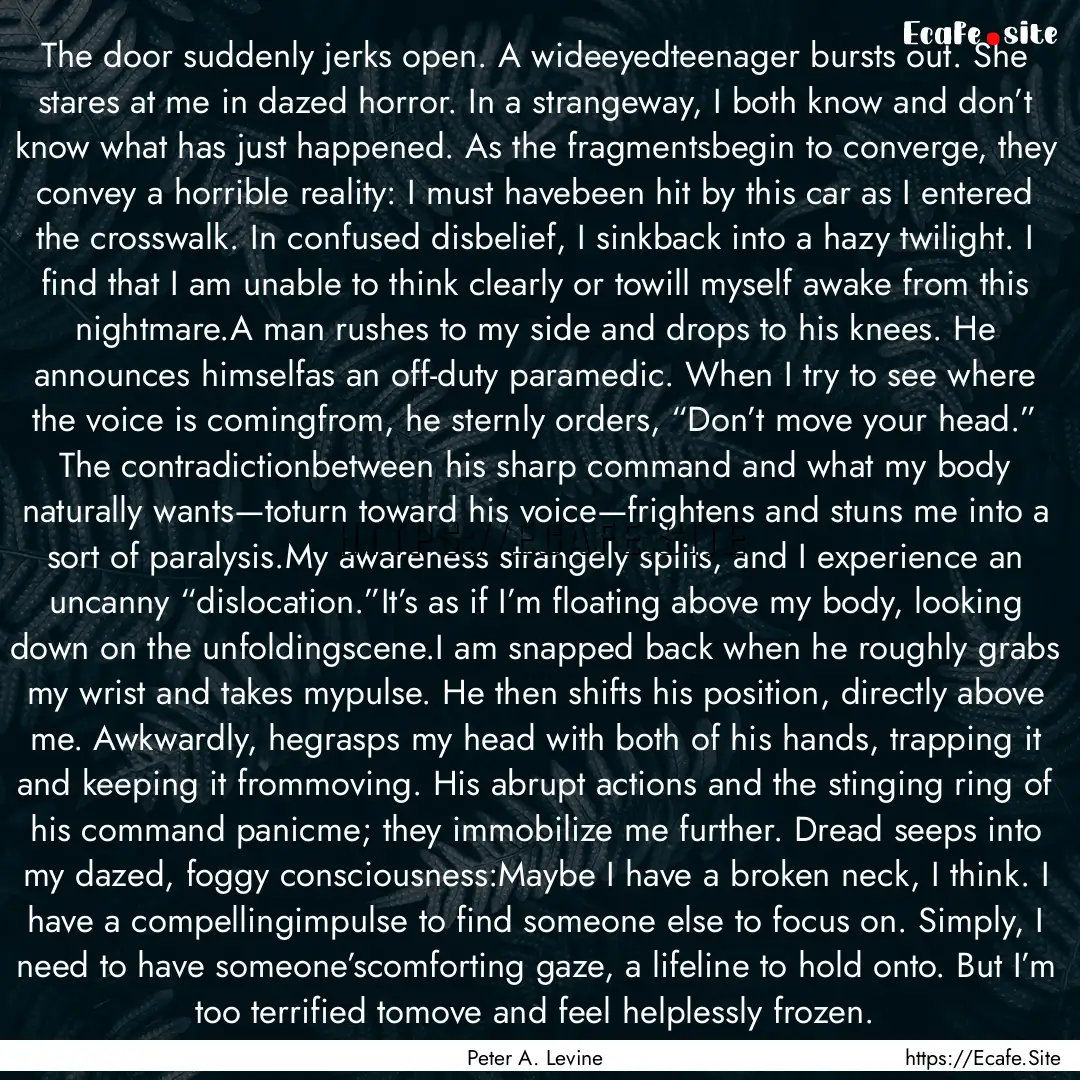
Report, if you have a problem with this page“ The door suddenly jerks open. A wideeyedteenager bursts out. She stares at me in dazed horror. In a strangeway, I both know and don’t know what has just happened. As the fragmentsbegin to converge, they convey a horrible reality: I must havebeen hit by this car as I entered the crosswalk. In confused disbelief, I sinkback into a hazy twilight. I find that I am unable to think clearly or towill myself awake from this nightmare.A man rushes to my side and drops to his knees. He announces himselfas an off-duty paramedic. When I try to see where the voice is comingfrom, he sternly orders, “Don’t move your head.” The contradictionbetween his sharp command and what my body naturally wants—toturn toward his voice—frightens and stuns me into a sort of paralysis.My awareness strangely splits, and I experience an uncanny “dislocation.”It’s as if I’m floating above my body, looking down on the unfoldingscene.I am snapped back when he roughly grabs my wrist and takes mypulse. He then shifts his position, directly above me. Awkwardly, hegrasps my head with both of his hands, trapping it and keeping it frommoving. His abrupt actions and the stinging ring of his command panicme; they immobilize me further. Dread seeps into my dazed, foggy consciousness:Maybe I have a broken neck, I think. I have a compellingimpulse to find someone else to focus on. Simply, I need to have someone’scomforting gaze, a lifeline to hold onto. But I’m too terrified tomove and feel helplessly frozen. ”

Peter A. Levine
From : In an Unspoken Voice: How the Body Releases Trauma and Restores Goodness



